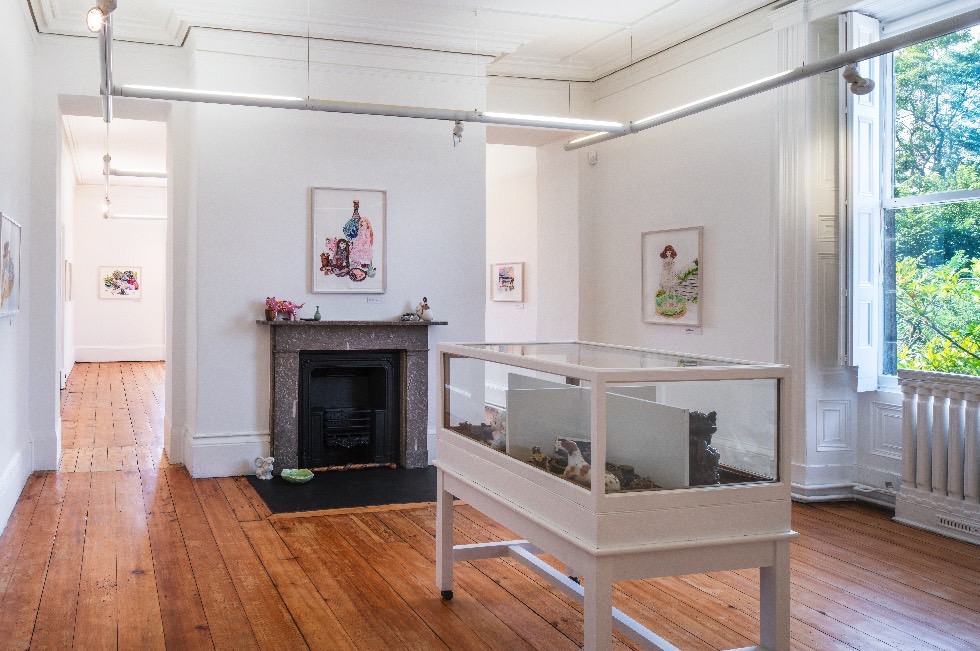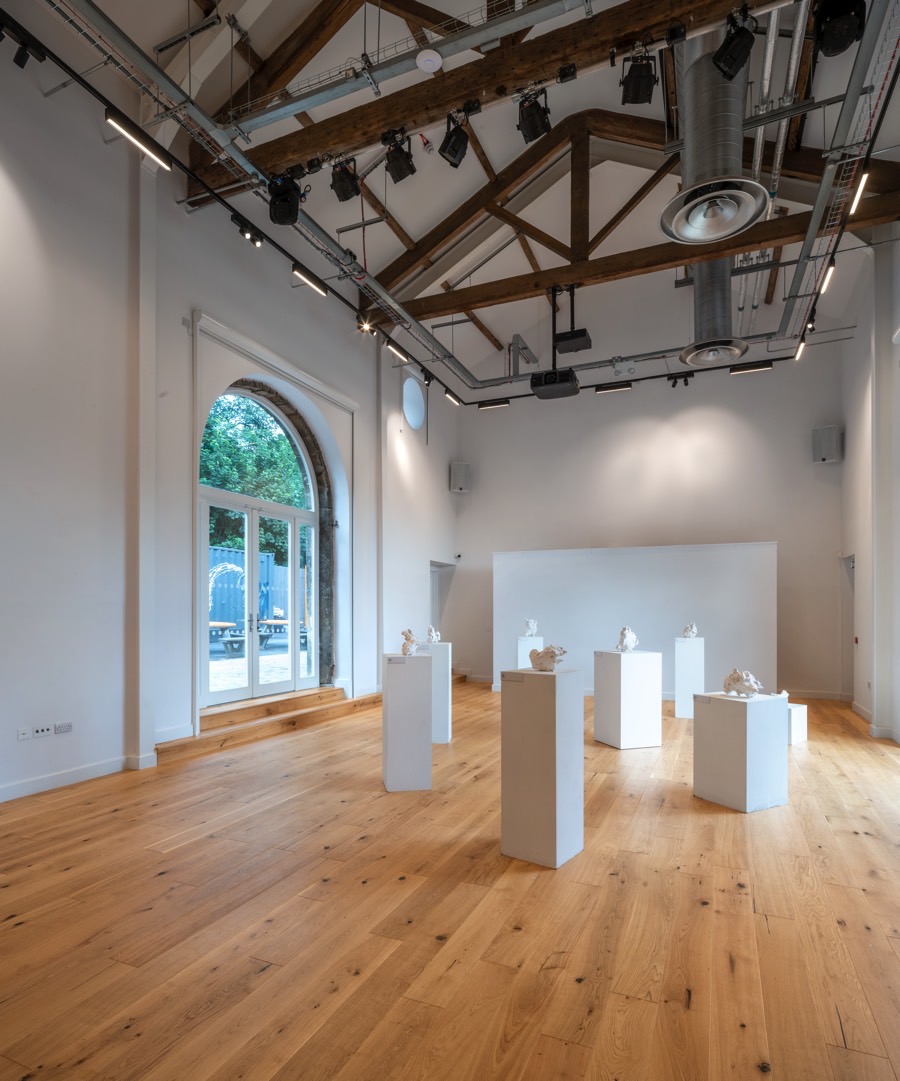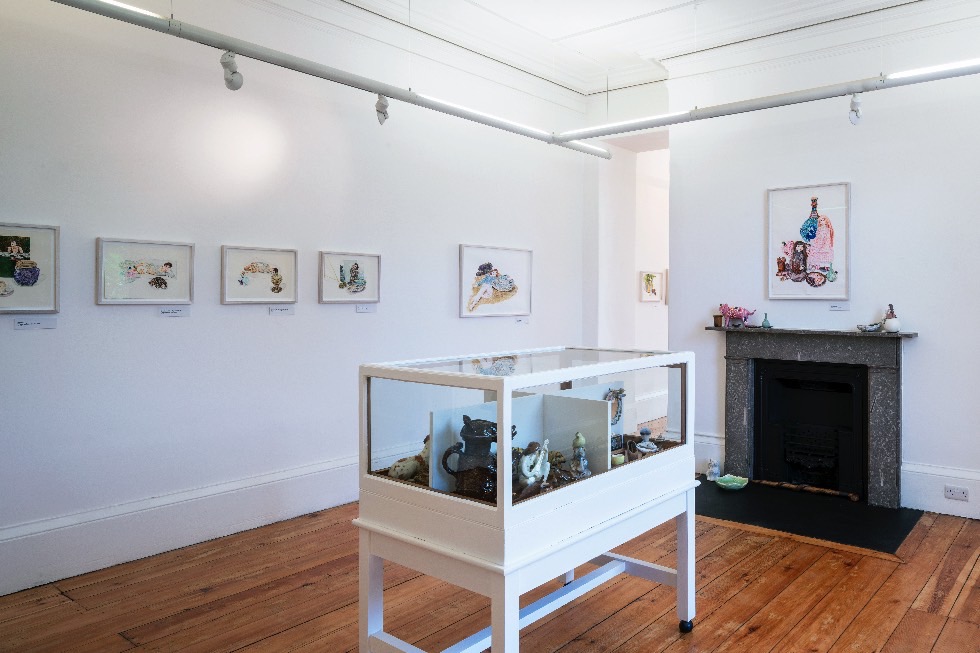“Knockout, first-class art is our priority”: Introducing The New Whitaker Museum

Lancashire’s Whitaker Museum and Art Gallery has reopened after a substantial renovation and rebrand. Angela Tait meets its Creative Director, Gaynor Seville, and takes stock of its ‘people spaces’, ambitious programming, and a re-hang of its precious, strange collections…
As I walk up the steep hill towards the newly re-opened Whitaker Museum and Art Gallery in Rawtenstall, Lancashire, I’m apprehensive. I knew The Whitaker of old pretty well, having worked with them several times in the past as an artist. There’s been too much change for us all in the last couple of years, so how will one of my favourite places have coped with a huge renovation and rebrand? Will the new Whitaker retain enough of its character to stay in my heart?
Until a couple of years ago, this grand 1840s mill-owners house overlooking the Rossendale Valley was a small museum and gallery. A substantial natural history collection, exhibitions, workshops, events and bar/restaurant were all competing for space. The directors Jackie Taylor, Julian Williams and Carl Bell worked tirelessly to create a place which was loved by the community and supported by a healthy bucketful of goodwill from volunteers.
But the trio had big dreams. In 2019, after years of bid writing and planning, The Whitaker was awarded a substantial development grant courtesy of the National Lottery and Heritage Fund, to develop their premises. So whilst the rest of us were hunkered down, working from home, shielding or furloughed, in Rawtenstall things were occurring.
So, as I walk into the atrium, I’m in an entirely new building that joins the original house to a converted stable block. I’m here to meet Gaynor Seville, the recently appointed Creative Director. She explains that the additions to The Whitaker are ‘people spaces’; a large bar/restaurant, outdoor seating, and a flexible double-height exhibition/function room, which can host weddings, performances, exhibitions or screenings, as well as providing much more range to show off the collection and exhibitions.
Manchester-born Seville has a substantial background in public art, including a decade as Public Art Manager for the government’s Percent for Art scheme in County Mayo, on the West coast of Ireland, and six years developing public art for Salford City Council. In Lancashire, “knockout, first-class art” is her priority. Currently on show (until the end of November) is the British Textile Biennial – a boundary-pushing display of experimental textile work, crossing into sculpture, painting and wearable art, that highlights the region’s historic links with global fabric industries. The Whitaker’s opening solo shows included new work from two Greater Manchester based artists: Paper Gallery founder David Hancock’s A Still Life, hyper realistic watercolour and gouache paintings using the museum’s own strange archive (more on that later) as subject matter; and Kara Lyons’ Marginalia, sensual plaster sculptures and intricate charcoal and graphite drawings scrutinising feminism and mythology.

Seville plans to continue platforming new and challenging work. We talk about this and ideas that are currently at the vanguard – gender, sexuality, identity. There’s a physical place for discussion, called The Reflect and Respond Room – previously the bar – a quiet space opposite the downstairs gallery, with comfortable furniture for conversation, study or reading. The team have recently launched an annual open-call in which a recent graduate will receive a solo show, bursary and professional mentoring. As an artist and academic, this is music to my ears: contemporary work from emerging makers and thinkers, exposing their thoughts about the issues of the day. A fierce advocate for widening participation and art for all, Seville is keen to make Rossendale a space for challenging, contemporary art, precisely because it hasn’t been viewed that way in the past.– “Never underestimate local communities”, she says, firmly. The Whitaker can be a place where the old might sit comfortably amongst the new, both in terms of artefacts and ideas.
On the old, the permanent collection used to (and still partly does) reside in the attic. A series of irregular rooms, full to bursting with cabinets, shelves and drawers, every single space is filled with a glorious range of random items, collected over generations. Open one drawer and it’s filled with shells or birds eggs; check out a stack of boxes to find Victorian corsetry or handmade children’s gloves and tiny clogs. Slightly damaged ceramicware reminiscent of my Grandmother’s mantlepiece is stored in amongst finer pieces, clearly from the Silk Road route. Previously, the collection was held in several curated rooms. One of the old natural history displays remains intact: local specimens brought up to date with a new hang and a staged roomset, viewable only from the rope across the door.

How do you present this kind of collection without losing the delight and wonder of discovery? Contemporary theatre director Bob Firth’s intervention, Cabinet of Curiosities, is an inspired solution to this conundrum: a type of Wunderkammer re-hang of the archives, beginning with an antiquated fairground machine, which immediately unearths memories of the Zoltar machine from Big and regular trips to Blackpool. Inside the base, where there should be cheap cuddly toys, rests a collection of tropical shells, and as I start to process the visual cacophony, this tugging at my memory becomes more vivid and tangled. Above me is an upside-down alligator, and as I turn the corner I’m confronted by a full size figure in a detailed Victorian mourning gown with several taxidermied birds in place of a head. There’s a puppet the size of a small child, hung on the wall next to portraits in fancy gilt frames. There are cabinets filled to bursting with incongruous objects, instruments of torture, and a colourful film which projects every fifteen minutes over highly patterned wallpaper. This place is a feast for the senses and a superb way to understand the collection in a new way. I admit, I’m delighted.
I’ve been largely gushing about the new museum. I am conscious I should be taking a more critical role. It’s true I’m not crazy about the ‘Tate-esque’ branding on the staff t-shirts and three-word strapline. Even as I write it sounds like a petty niggle, but this place is bursting with existing quirks, like the butterfly carpet that they’ve kept on the grand staircase and the glorious tiles in the old entrance hall (which has been turned into a micro-gallery for temporary, experimental works). I would have liked to have seen something equally unique reflected in the branding. Nevertheless, this place is terrific and I’m itching to spend more time here. The new Whitaker is sharper and more focused but maintains enough character to keep me hooked.
On the way home, back down that steep hill, I picture this quality of cultural offer in every small town like Rawtenstall. Imagine – access to top quality art, places for children to learn, pay and training for artists… a museum where communities meet and encounter an exciting cultural programme. This is a great model for a museum.
Angela Tait
The Whitaker is open Wednesday to Sunday, 10am – 4pm, and late night Thursday until 8pm, FREE. Haslingden Road, Rossendale, England BB4 6RE
See the British Textile Biennial: Connected Cloth until 28 November 2021





